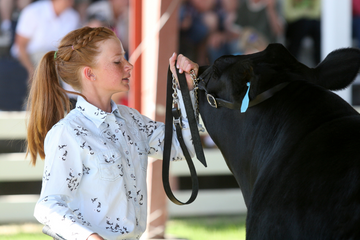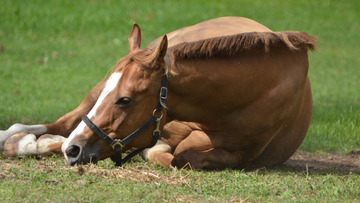
Springtime is here! This also means lots of wet and mucky turn out areas are here too. A common hoof ailment, known as thrush, thrives in these wet environments. Thrush is a smelly black goo type infection that lives around the edge of your horse’s frog and takes root in the soft tissues on the underside of the hoof. Thrush is extremely common and is usually not a problem when treated promptly. However, it must be treated diligently.
The best way to take care of thrush is to reduce the three conditions it needs to survive: constant moisture, an anaerobic environment, and the presence of fungi, bacteria, and other microorganisms. Here are some ways to prevent thrush:
-
Dry footing. If your turnout areas are wet, bring the horses into the barn periodically to allow your horse’s hooves to dry out. Spread gravel in pastures high traffic areas. For example, in front of the water troughs and gates.
-
Keep stalls and paddocks clean. Clean stalls and paddocks every day. Manure and urine are home to the growth of pathogens.
-
Keep your horses feet on schedule with the farrier. Horses with hoof imbalances and lameness issues are at a higher risk for thrush. Keep your regular farrier visits scheduled.
-
Avoid acidic footing if possible. Chipped or shredded wood shavings are common bedding choices. However, some trees such as conifers are more acidic than others. As these materials decompose in wet paddocks, they can change the pH of the soil and become home to the bacteria that causes thrush. At all costs, avoid these types of footing if possible.
-
Pick your horse’s feet out. Check your horse’s feet and pick them out at least once a day. If your horse is in a larger pasture, it will not require daily attention, but do check their hooves at least once a week.
Thrush is 100% treatable, but it is easiest to prevent from the get go! Follow these few tips to help avoid thrush at your farm.
For more information on preventing thrush, visit
HERE.
 Springtime is here! This also means lots of wet and mucky turn out areas are here too. A common hoof ailment, known as thrush, thrives in these wet environments. Thrush is a smelly black goo type infection that lives around the edge of your horse’s frog and takes root in the soft tissues on the underside of the hoof. Thrush is extremely common and is usually not a problem when treated promptly. However, it must be treated diligently.
The best way to take care of thrush is to reduce the three conditions it needs to survive: constant moisture, an anaerobic environment, and the presence of fungi, bacteria, and other microorganisms. Here are some ways to prevent thrush:
Springtime is here! This also means lots of wet and mucky turn out areas are here too. A common hoof ailment, known as thrush, thrives in these wet environments. Thrush is a smelly black goo type infection that lives around the edge of your horse’s frog and takes root in the soft tissues on the underside of the hoof. Thrush is extremely common and is usually not a problem when treated promptly. However, it must be treated diligently.
The best way to take care of thrush is to reduce the three conditions it needs to survive: constant moisture, an anaerobic environment, and the presence of fungi, bacteria, and other microorganisms. Here are some ways to prevent thrush:






















